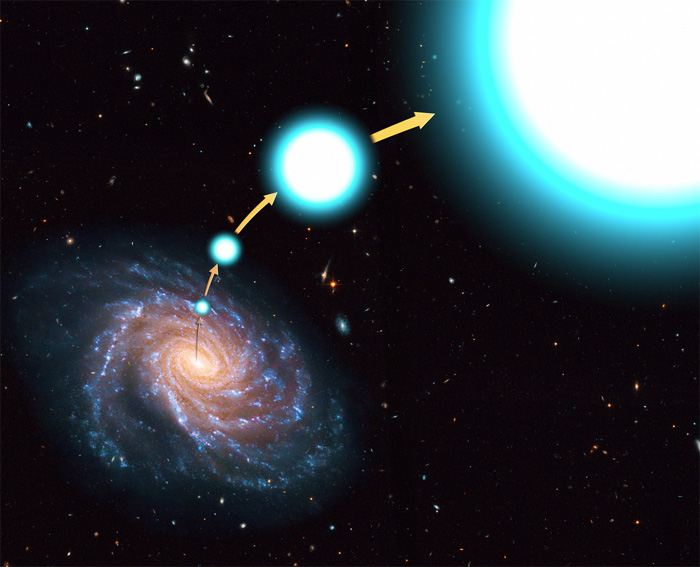In nearby galaxy M82, a star is exploding ... and you can see it! M82 is actually filled with stars being created and dying. Trace reports on this exploding news and tells you everything you want to know about supernovas.
But 708 didn't go quietly into the night. Instead, scientists believe the feeding frenzy ended in a supernova explosion that catapulted the ravaged remains with such force it's leaving the galaxy. Fast.

It's also the only one of about 20 similar runaways slingshot away by a supernova explosion, research published in this week's Science shows.
The other stars traveling fast enough to leave the Milky Way's gravitational fist are believed to have been booted by the supermassive black hole lurking in the center of the galaxy.
"US 708 does not come from the galactic center. We don't know any other supermassive black hole in our galaxy. One needs one of those. A smaller, stellar-mass black hole formed by the collapse of a massive star can't do the job," astronomer Stephan Geier, with the European Southern Observatory, told Discovery News. "It's only one object so far," he added, but if others can be found, scientists would have a way to directly study supernova.
US 708 will leave the Milky Way in roughly 25 million years, cooling over time and transforming into a white dwarf star. Astronomers first found the star in 2005, but at that time could only determine the velocity, not the rapid spin, which later became evidence for its donor past.
In 2009, theorists developed computer models showing that stars could reach escape velocity by a supernova blasts. "This motivated us to have a closer look at US 708 again," Geier said.
The star had always been unusual because all other known hypervelocity stars are normal main sequence stars, he added. In contrast, US 708 is a compact helium star, which was formed after a close and massive companion star striped away almost all of its hydrogen.
"We have made an important step forward in understanding (type 1 supernova) explosions," the researchers wrote in the Science paper. "Despite the fact that those bright events are used as standard candles to measure the expansion (and acceleration) of the universe, their progenitors are still unknown."




Comment: There is no specific evidence that traces trajectories back to a central black hole, but, to date, there are no other explanations for a mechanism that would impart so much kinetic energy onto a star. The theory is a star could slingshot out of a binary star system if the stellar duo swung close to a central black hole. The hole's gravitational tidal forces would break apart the duo's gravitational coupling. One of the pair would plunge toward the black hole. The other would fly with matching velocity in the opposite direction, away from the black hole. So far, 16 of these hypervelocity stars are known, the first detected in 2005. The single giant black hole propulsion theory is supported by observations that show the stars seem spaced sequentially, like a series of fired cannonballs. It is speculated that a sun like ours, under these conditions, would carry its planetary system with it.